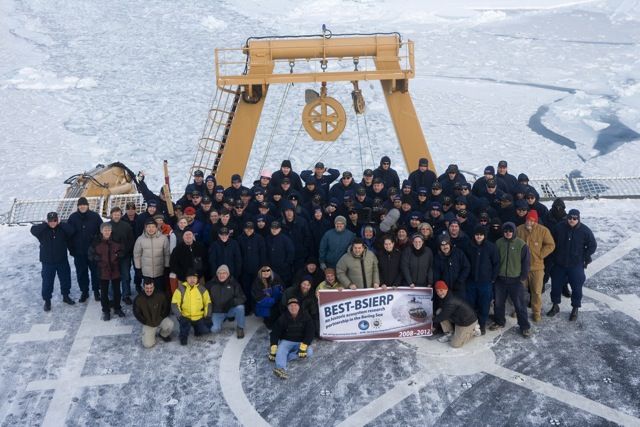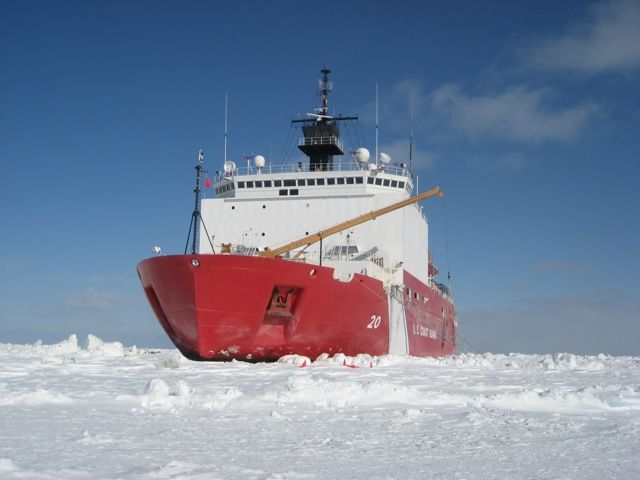Today was another incredible day aboard the USCGC Healy. The Bering Sea Ecosystem Study team of scientists and the US Coast Guard held a ‘Live from IPY!' webinar this morning. It was fantastic talking to everyone and everyone aboard the Healy enjoyed talking about his or her projects and research. I wish to say thank you to everyone who participated from around the US and to everyone on the Healy. The participants from the Healy were Lee W. Cooper, Chesapeake Biological Laboratory, University of Maryland Center for Environmental Science; USCG Captain Ted Lindstrom, Commanding Officer; Dr. Rolf Gradinger, University of Alaska Fairbanks; Clarence Pautzke, North Pacific Research Board; Sue Moore, National Marine Mammals Lab Jeff Wilson, BBC Natural History Unit, Bristol, UK; USCG LTJG Stephen Elliott, Marine Science Officer; Nora Deans, North Pacific Research Board; and Craig Kasemodel, Central Middle School of Science (Anchorage) Polar TREC teacher.
 The Bering Sea Ecosystem Study science expedition, March 2008, on the flight deck of the USCGC Healy in the Bering Sea south of St. Lawrence Island. Image courtesy of Christian Morel.
The Bering Sea Ecosystem Study science expedition, March 2008, on the flight deck of the USCGC Healy in the Bering Sea south of St. Lawrence Island. Image courtesy of Christian Morel.
What is IPY? IPY, the International Polar Year, is a coordinated, international effort to improve our knowledge and understanding of polar processes and the role of the Polar Regions in the global environmental system. It began in March 2007 and will end in 2009. IPY includes scientific studies of the physical, biological and human dimensions of the Arctic and the Antarctic, as well as education and outreach.
The Bering Sea Ecosystem Study is an important component of IPY globally and for Alaska. Alaska and the Polar Regions are sensitive to climate change. Rapid changes in the Polar Regions have been observed over the past two decades. The Polar Regions interact and influence the global oceans, atmosphere, and continents. Science expeditions, such as the Bering Sea Ecosystem Study are trying to understand and document the changes to the sea ice and the flora and fauna that are dependent upon it. These changes can have a significant impact on humans living in other parts of the world.
 The Healy in the ice pack of the Bering Sea, March 2008.
The Healy in the ice pack of the Bering Sea, March 2008.
